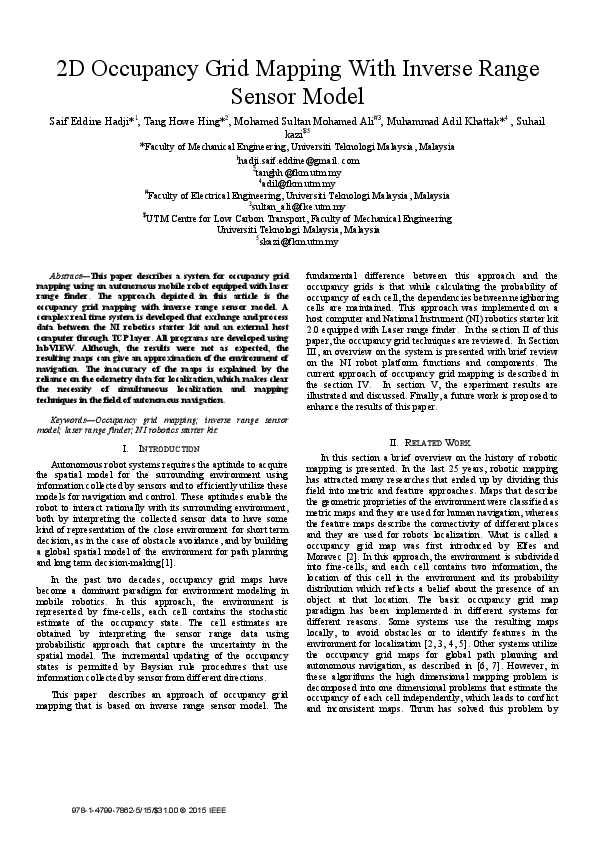


Furthermore, these robots must be able to autolocalizing and to navigate without human supervision, detect and locate obstacles and constructing its own map of the environment, using only their sensors and eventually a communication system with a central computer. To do this, they use stereovision and laser range finders. Such robots require highly autonomy and real-time processing for recognizing unknown environments. In particular, the service robotic tackles the problem of domestic robots. This is called service robotic, and it is supposed that the robot acts total or partially with autonomy. Nowadays, the artificial intelligent field has developed service task in robotic systems with the aim of providing help or comfort to humans. The resulted occupancy grid is analysed and discussed at the end of this document. Experiments on detecting, mapping and avoiding obstacles are performed using the mobile robotic platform DaNI 2.0 and the VxWorks system. A Gaussian function is used for modelling the ultrasonic sensor with the aim of reaching higher precision of the distance measured for each obstacle in the scene. As soon as the robot starts its trajectory in real indoor environments with obstacles, the sensor continuously detects and updates the occupancy map by the logsig strategy. A first path for robot navigation based on the initial local map is estimated using the potential field strategy. The encoders allow computing the robot location in the initial local map. This map provides the position of the nearest obstacles in the scene useful for achieving the reactive navigation. A local map is initially constructed using the ultrasonic sensor mounted in the front of the robot. This chapter presents a strategy for constructing an occupancy map by proposing a probabilistic model of an ultrasonic sensor, during robot indoor navigation. Experimentally, a range accuracy of < 1.7 mm (1σ) was achieved on a 1 × 2 m sample using miniaturised EMATs operating at a wavelength of 22 mm.Robot mobile navigation is a hard task that requires, essentially, avoiding static and dynamic objects. It is shown that the proposed mapping algorithm successfully estimates the position of a sample's edges. The principle is demonstrated in both simulation and laboratory-based experiments. A Bayesian mapping technique (Occupancy grid mapping) was used to map the boundaries of an irregular sample in a pseudo-pulse-echo mode. Shear Horizontal (SH) guided waves generated by Electro-Magnetic Acoustic Transducers (EMATs) are used for mapping steel samples with a nominal thickness of 10 mm. It considers the specific problem of mapping geometric features using the guided ultrasonic waves, which enables the localisation of edges and/or the welded joints.

Experimentally, a range accuracy of < 1.7 mm (1σ) was achieved on a 1 × 2 m sample using miniaturised EMATs operating at a wavelength of 22 mm.ĪB - This paper evaluates the benefits of using ultrasonic guided waves for the mapping of a structure, when implemented on a mobile magnetic robotic platform. N2 - This paper evaluates the benefits of using ultrasonic guided waves for the mapping of a structure, when implemented on a mobile magnetic robotic platform. T1 - Application of ultrasonic guided waves to robotic occupancy grid mapping


 0 kommentar(er)
0 kommentar(er)
